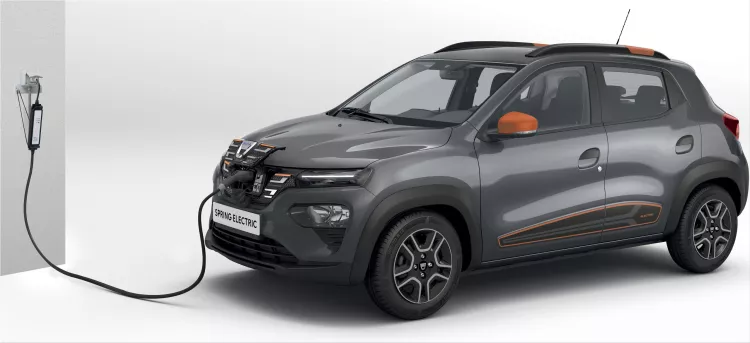The era of the electric vehicle has arrived. GM, the world's largest automaker, stated earlier this year that it plans to stop selling gasoline and diesel vehicles by 2035. Likewise, Audi, a German automaker, intends to discontinue making such vehicles by 2033. Several other automotive companies have released similar road maps. Suddenly, significant automakers' hesitancy in electrifying their fleets has turned into a hasty retreat.
The electrification of personal mobility is gaining traction in ways that even its most enthusiastic supporters could not have predicted only a few years ago. Government mandates will hasten change in many countries. Even without additional laws or restrictions, electric vehicles will account for half of worldwide passenger vehicle sales by 2035, and Dacia Spring aims to be there.
This vast industrial transformation represents a transition from a fuel-intensive energy system to a material-intensive energy system. As a result, hundreds of millions of electric cars with large batteries inside will hit the roads in the following decades. Each of those batteries will contain tens of kg of yet-to-be-mined materials.
Materials scientists are tackling two significant hurdles in preparation for a world dominated by electric vehicles. One is to reduce the amount of inadequate, expensive, or hard metals in batteries mined at high environmental and societal costs. Another option is to improve battery recycling so that valuable metals in used automotive batteries may be utilized effectively. Recycling will be a big part of the equation.
Government incentives and the expectation of future regulations have prompted battery- and carmakers to invest billions of dollars in lowering the costs of manufacturing and recycling electric vehicle batteries. National research organizations have also established centers to investigate improved ways to manufacture and recycle batteries. Because mining metals is still cheaper than recycling them in most cases, developing ways to recover valuable metals cheaply enough to compete with newly mined ones is an important goal.
Researchers' first task is to limit the number of metals mined for electric vehicle batteries. According to data from Argonne National Laboratory, a single automotive lithium-ion battery pack might include roughly 8 kg of lithium, 35 kg of nickel, 20 kg of manganese, and 14 kg of cobalt, depending on the battery type and model of the electric vehicle.

According to analysts, lithium-ion batteries are unlikely to be phased out anytime soon: their cost has dropped so substantially that they are expected to remain the dominant technology for the foreseeable future. Even if their performance has improved, they are now 30 times cheaper than when they initially hit the market as small, portable batteries in the early 1990s. By 2023, according to BNEF, the cost of a lithium-ion EV battery pack will be less than US$100 per kilowatt-hour, or around 20% less than it is now. As a result, by the mid-2020s, electric vehicles, which are presently more expensive than conventional cars, should have reached price parity. Moreover, according to some calculations, electric cars are currently cheaper than gasoline vehicles over their lifetimes since they are less expensive to power and repair.
Lithium is not in short supply. According to a June analysis from BNEF, current metal stocks are sufficient to see the transition to electric vehicles through to the mid-century. On the other hand, reserves are a flexible concept since they represent the quantity of a resource that can be economically mined at current prices and under current technical and regulatory constraints. In addition, scaling up lithium production to meet demand is difficult as automobiles become more electrified. This could lead to short-term shortages and price volatility.
The rise of lithium mining has its own set of environmental concerns: present extraction methods use a lot of energy. However, modern procedures for extracting lithium from geothermal water, which uses geothermal energy to power the process, are safer. Despite the negative impact on the environment, lithium mining will help to replace harmful fossil-fuel extraction.
Researchers are particularly concerned about cobalt, the most valuable component of contemporary electric vehicle batteries—the Democratic Republic of the Congo mines two-thirds of the world's supply. Human-rights groups have expressed worry about working conditions in the country, including child labor and health risks to workers; cobalt, like other heavy metals, is hazardous if not handled correctly. Alternative sources, such as metal-rich 'nodules' discovered on the seafloor, could be used, but these come with their own set of environmental risks. In addition, nickel, another essential component of electric vehicle batteries, may potentially be in short supply.
Several laboratories have experimented with low-cobalt or cobalt-free cathodes to address raw material concerns. However, even if more than half of the lithium ions are released during charging, cathode materials must be carefully chosen such that their crystal structures do not break up. Furthermore, removing cobalt from a battery reduces its energy density.
Researchers will encounter an unanticipated effect if batteries are manufactured without cobalt. Because other minerals, particularly lithium, are now cheaper to mine than to recycle, the metal is the primary factor that makes recycling batteries cost-effective. The goal of the research has been to improve the process to make recycled lithium more economically viable. China, Japan, and South Korea produce the vast bulk of lithium-ion batteries. According to a spokeswoman for CATL, China's largest manufacturer of lithium-ion cells, the company can recycle 120,000 tonnes of batteries every year. That's enough to power over 200,000 cars, and the company can recover the majority of the lithium, cobalt, and nickel. Government measures are aiding this.
The system will aid whatever recycling procedures become commonplace. Although the impending torrent of expended batteries has been portrayed in the media as an imminent calamity, analysts see it as a huge opportunity. Markets will kick in after millions of huge batteries approach the end of their useful lives, making recycling more effective – and the business case for it more appealing. However, other academics argue that when it comes to the environmental impact of electric vehicles batteries, they are held to an unreasonably high standard.















